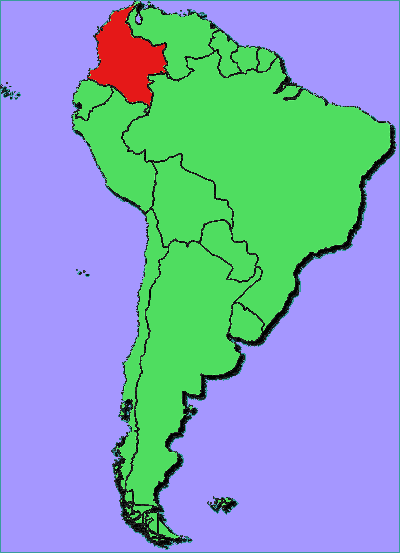
Circle the area on this map

C. Colombia is bordered to the northwest by Panama; to the northeast by Venezuela; to the east by Brazil; to the southwest by Ecuador and south by Peru. Columbia is the only major coca producer which allowed the aerial spraying.
D. The U.S. sprayed more than 20 million gallons of Agent Orange and other herbicides during the Vietnam War. The herbicides contained dioxin, which causes birth defects, cancer and other illnesses. At least 150,000 Vietnamese children have been born with severe birth defects since the war ended in 1975.
B. The U.S. street price of a gram of cocaine is about 74 percent cheaper than it was 30 years ago, according to figures from the Drug Enforcement Agency.
A. In the sierra of Peru, Bolivia, and northern Argentina, coca has been consumed as a stimulant and cure for altitude sickness. The sale and consumption of coca leaves - but not cocaine - is legal in these countries.